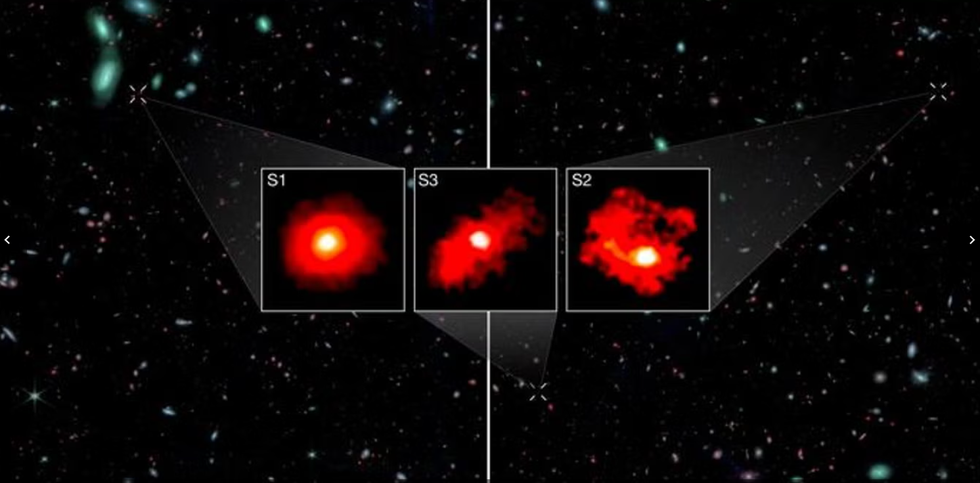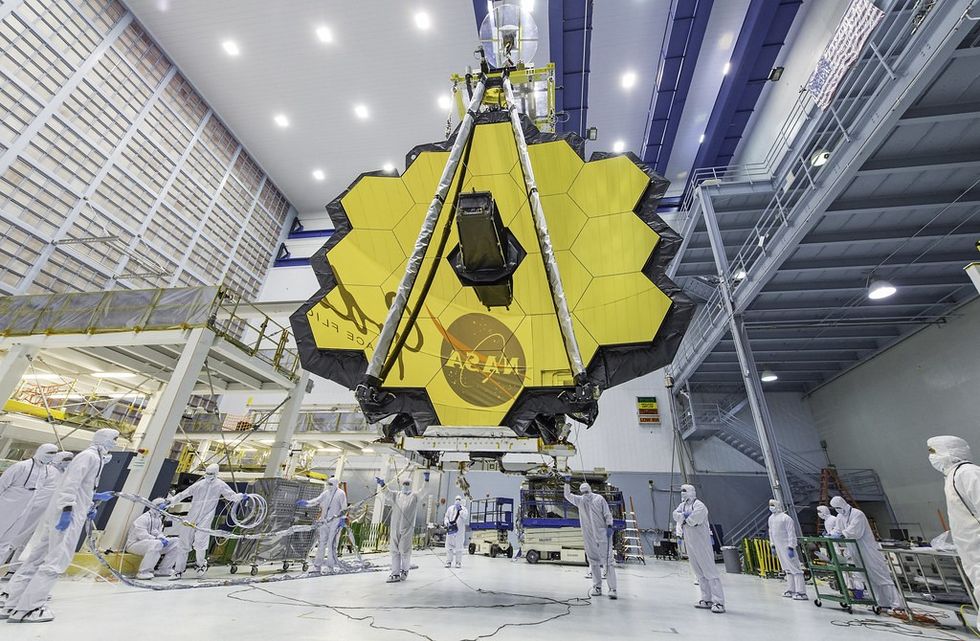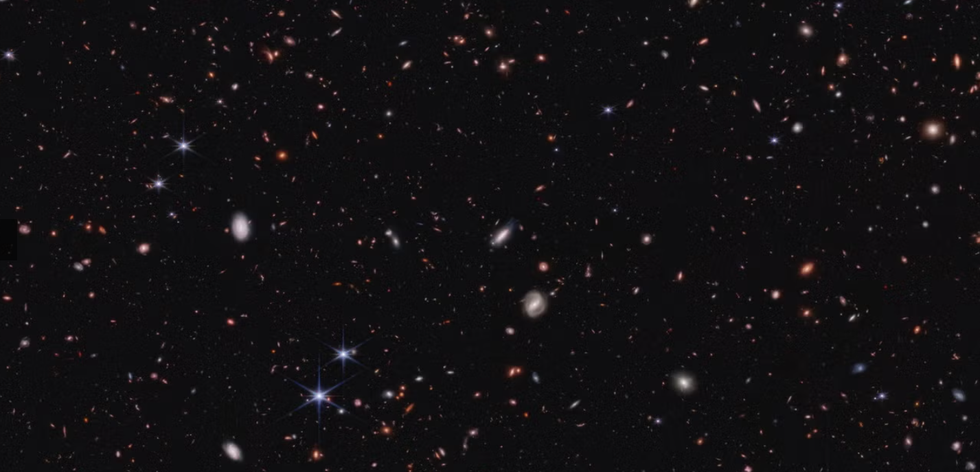James Webb Telescope uncovers mysterious 'Red Monster' galaxies in early universe

Each of these ancient galaxies, which appear as red eeire eyes in the telescope images, are nearly as massive as our own Milky Way
Don't Miss
Most Read
Latest
Astronomers have made a groundbreaking discovery using Nasa's James Webb Space Telescope, identifying three mysterious ultra-massive galaxies in the early universe.
The newly discovered celestial bodies, dubbed "Red Monsters", appear as eerie, blood-red glowing eyes in telescope images due to their extreme dust content.
These colossal systems of stars, gas, dust, and dark matter have stunned the scientific community with their unprecedented size and characteristics.
Each of these ancient galaxies is nearly as massive as our own Milky Way, despite having formed within the first billion years following the Big Bang.

The newly discovered celestial bodies, dubbed 'Red Monsters', appear as eerie, blood-red glowing eyes in telescope images
|NASA/CSA/ESA, M. Xiao & P. A. Oesch (University of Geneva), G. Brammer (Niels Bohr Institute), Dawn JWST Archive
The discovery is part of the James Webb Space Telescope FRESCO survey programme, utilising the telescope's specialised instruments for deep space observation.
These remarkable galaxies have challenged existing scientific understanding of how early universe structures formed.
Scientists previously believed all galaxies developed gradually within large halos of dark matter that captured gas through gravity.
The Red Monsters, however, appear to have formed stars far more efficiently than previously thought possible.
SPACE LATEST:
 The James Webb Space Telescope (JWST) was launched in 2021 | Flickr
The James Webb Space Telescope (JWST) was launched in 2021 | FlickrDr David Elbaz, director of research at CEA Paris-Saclay, noted these galaxies were particularly difficult to study as they are optically invisible due to dust attenuation.
The newly discovered galaxies are forming stars at nearly twice the efficiency of lower mass galaxies from the same cosmic period.
This unprecedented star formation rate has prompted researchers to reassess current models of galaxy formation.
Professor Stijn Wuyts, from the University of Bath, highlighted the extraordinary nature of these celestial bodies.

A small section of the image captured by the telescope
|NASA/CSA/ESA, M. Xiao & P. A. Oesch (University of Geneva), G. Brammer (Niels Bohr Institute), Dawn JWST Archive
"Many processes in galaxy evolution have a tendency to introduce a rate-limiting step in how efficiently gas can convert into stars, yet somehow these Red Monsters appear."
Wuyts is one of the co-authors of the work published in the journal Nature. The study was led by the University of Geneva.
Dr Mengyuan Xiao, lead author of the new study and postdoctoral researcher at the University of Geneva, said: “These results indicate that galaxies in the early Universe could form stars with unexpected efficiency.
"As we study these galaxies in more depth, they will offer new insights into the conditions that shaped the Universe’s earliest epochs.
"The Red Monsters are just the beginning of a new era in our exploration of the early Universe.”











